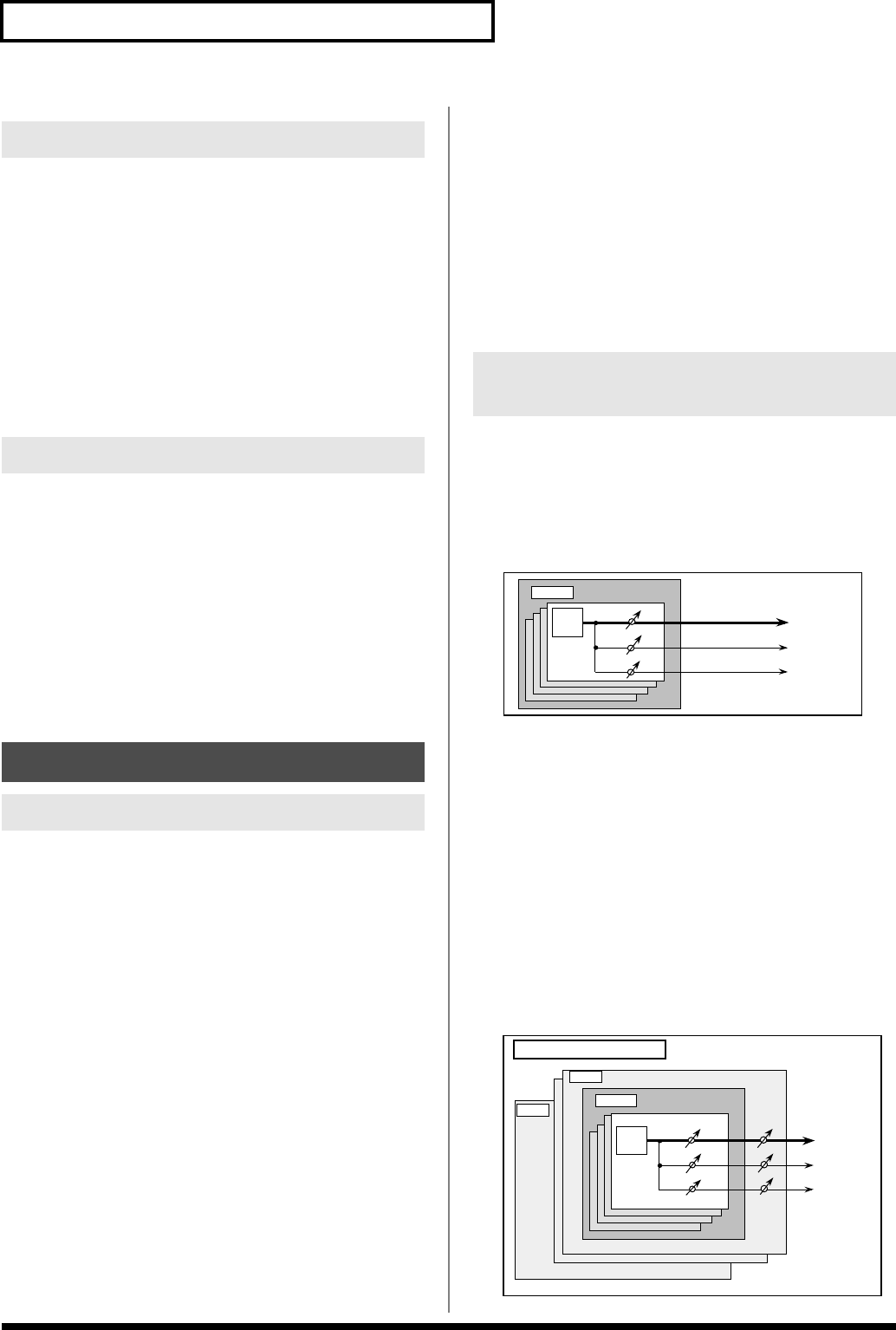
20
Overview of the JUNO-G
System Memory
System memory stores system parameter settings that determine
how the JUNO-G functions.
User Memory
User memory is the internal memory area that holds patches,
performances, samples, and performance data.
Memory Card
You can use a memory card to store patches, performances, samples,
and performance data just as you can in User memory.
Preset Memory
Data in Preset memory cannot be rewritten. However, you can call
up settings from preset memory into the temporary area, modify
them and then store the modified data in rewritable memory (except
GM2).
Wave Expansion Board (SRX Series)
The JUNO-G can be equipped with a Wave Expansion Board (SRX
series; sold separately). Wave Expansion Boards contain Wave data,
as well as patches and rhythm sets that use this Wave data, which
can be called directly into the temporary area and played.
The JUNO-G has built-in effect units, and you can independently
edit each unit’s settings.
Multi-Effects
The multi-effects are multi-purpose effects that completely change
the sound type by changing the sound itself. Contained are 78
different effects types; select and use the type that suits your aims. In
addition to effects types composed of simple effects such as
Distortion, Flanger, and other such effects, you can also set up a
wide variety of other effects, even connecting effects in series or in
parallel. Furthermore, while chorus and reverb can be found among
the multi-effects types, the following chorus and reverb are handled
with a different system. In Performance mode, three types of multi-
effect can be used simultaneously; these are referred to as MFX1,
MFX2, and MFX3. In Patch mode you can use MFX1 and MFX2.
Chorus
Chorus adds depth and spaciousness to the sound. You can select
whether to use this as a chorus effect or a delay effect.
Reverb
Reverb adds the reverberation characteristics of halls or
auditoriums. Five different types are offered, so you can select and
use the type that suits your purpose.
Mastering Effect
This is a stereo compressor (limiter) that is applied to the final
output of the JUNO-G. It has independent high, mid, and low
ranges. Independently for the high-frequency, mid-frequency, and
low-frequency regions, this compresses any sounds that exceed the
specified level, making the volume more consistent.
In Patch Mode
Multi-effects can be used individually by each patch and rhythm set.
Chorus and reverb are each shared by patches and rhythm sets; the
same effect applies to each tone. Adjusting the signal level to be sent
to each effects unit (Send Level) provides control over the effect
intensity that’s applied to each tone.
fig.FXinPatch
* To each part you can assign either a Patch or a Rhythm Set.
In the Performance Mode
The multi-effects, chorus and reverb can be set individually for each
performance. The intensity of each effect will be set for each part.
When you apply effects in Performance mode, the effect settings of
the patch or rhythm set assigned to each part will be ignored, and
the effect settings of the performance will be used. Thus, the effects
for the same patch or rhythm set may differ when played in Patch
mode and in Performance mode. However, depending on the
settings, you can have effect settings for a patch or rhythm set
assigned to a part applied to the entire performance. In addition,
when using the multi-effects settings of a performance, you can use
three different multi-effects simultaneously, depending on the effect
type.
fig.FXinPfm.e
Rewritable Memory
Non-Rewritable Memory
About the Onboard Effects
Effect Types
How Effects Units Work in
Different Modes
TONE
Patch
Chorus
Reverb
Multi-Effects
Chorus
Reverb
Multi-Effects
Performance/Multitimbre
Part16
TONE
Patch
Part 1
JUNO-G_e.book 20 ページ 2006年2月13日 月曜日 午後2時44分


















